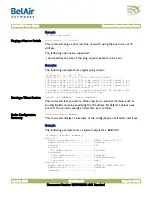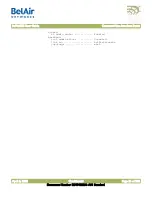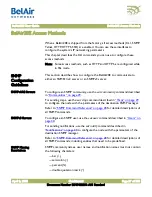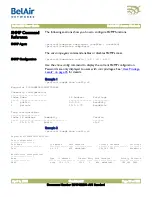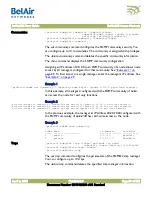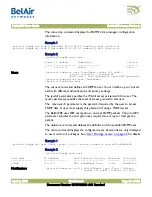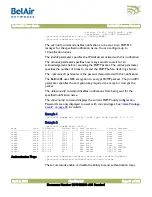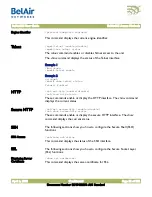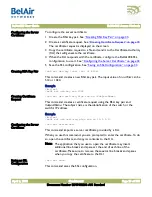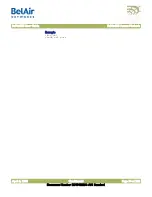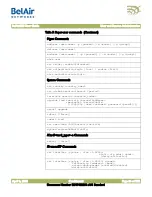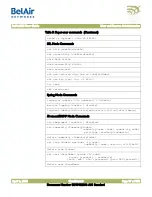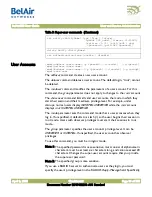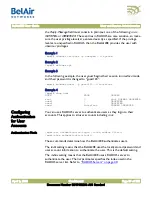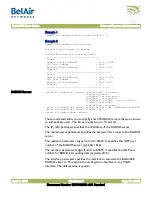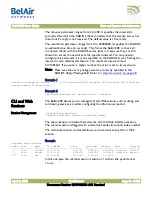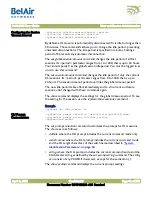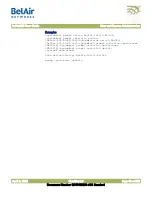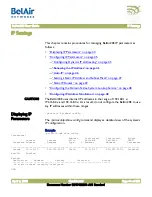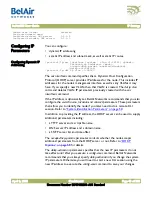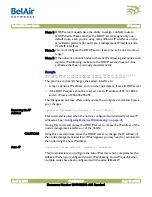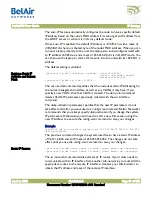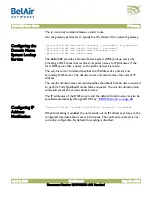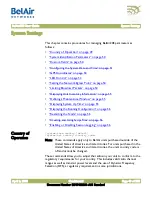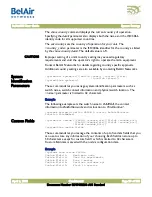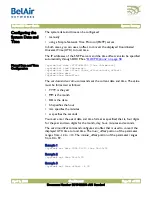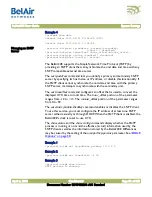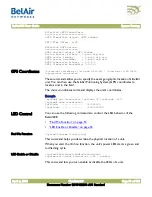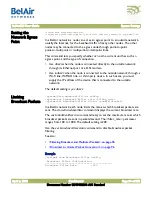
BelAir20E User Guide
User and Session Administration
April 2, 2012
Confidential
Document Number BDTM02201-A01 Standard
the
Reply-Message
field must contain in plain text one of the following:
root
,
NORMAL
or
OBSERVER
. These entries in RADIUS are case sensitive, so make
sure the user privilege levels are entered exactly as specified. If the privilege
levels are unspecified in RADIUS, then the BelAir20E provides the user with
observer
privileges.
Example 1
/mgmt# adduser testuser -p userpwd - d system
Example 2
/mgmt# deluser xyz
Example 3
In the following example, the user
guest
begins their session in
interface
mode
and their password is changed to “guest123”.
/mgmt# moduser guest –p guest123 –d interface
Example 4
/mgmt# show user
USER MODE GROUPS
root / root NORMAL OBSERVER
user1 / OBSERVER
user2 / OBSERVER
user3 interface NORMAL OBSERVER
Configuring
Authentication
for User
Accounts
You can use a RADIUS server to authenticate users as they login to their
accounts. This applies to all user accounts including
root
.
Authentication Mode
/mgmt/set authentication-login {local|radius <list>}
/mgmt/show authentication-login
These commands determine how the BelAir20E authenticates users.
The
local
setting means that the BelAir20E uses the locally stored password and
user account information to authenticate the user. This is the default setting.
The
radius
setting means that the BelAir20E uses a RADIUS server to
authenticate the user. The
list
parameter specifies the index used in the
RADIUS server list. Refer to
.

